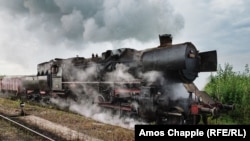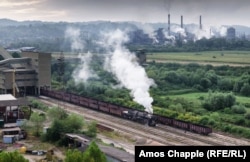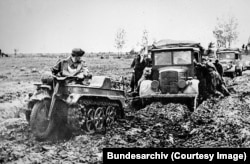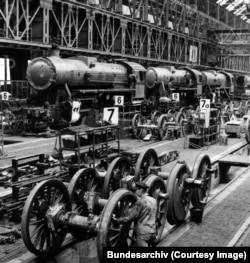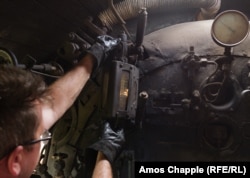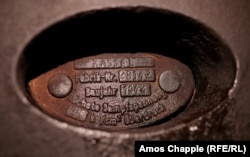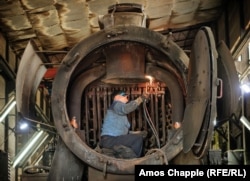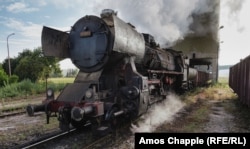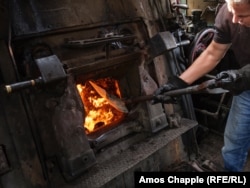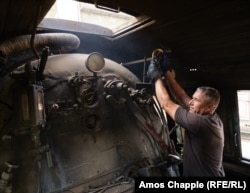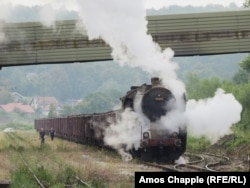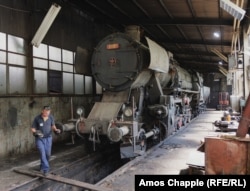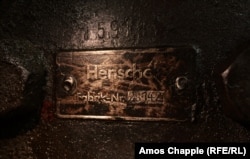At the outskirts of Bosnia's Sikulje coal mine, workers went to investigate after a foreigner was spotted photographing the mine's trains.
"It turned out he was German and his uncle drove one of these locomotives to the Russian front during World War II," said Hasan Blekovic, a senior manager at the mine.
Eighty years after rolling out of German factories, five "Kriegsloks" (War Locomotives) still operate in the Sikulje mine near Tuzla, a region the trains were built to help conquer.
After the 1941 invasion of the Soviet Union, Nazi Germany's war logistics became bogged down. Vehicle columns squelched to a stop on autumn roads, and German-made locomotives froze in the harsh winter that followed.
"The war cannot be lost due to the transportation problem, it must be solved," Adolf Hitler demanded of Albert Speer, the head of armaments and munitions for the Nazis. In 1942, Nazi leadership pushed for a vast output of stripped-down locomotives that could stand up to harsh Russian conditions and speed supplies to the eastern front.
Kriegslok trains could be made quickly, but kept vital components insulated from the cold, including its crew, who could shut themselves inside an enclosed cabin.
Thousands of the Kriegsloks were produced, many by Soviet prisoners of war.
Around 300 of the Nazi-made trains were used in the invasion of Yugoslavia, with more than half remaining in the country amid the chaotic German retreat.
Many of the trains were scrapped, others ended up in museums, but for Bosnia's embattled coal industry, the trains have become a vital part of operations.
Bosnia's coal mines have been hit hard by reductions in state subsidies and the country's pledge to shut down its coal industry by 2050, in line with EU accession requirements.
Five years ago, around 4,000 people worked at the Kreka mining company, whose assets include the Sikulje mine. Today the company employs just 1,700 and mine managers say every penny of expenses are being counted.
"The trains only cost us around 500 euros each month to operate," Blekovic, a director of maintenance at the Sikulje mine says of the Kriegsloks. The relatively tiny operational cost per locomotive is for lubricating oil and some other secondary supplies. Fuel is essentially free.
The kriegsloks were designed to run on brown coal, a crumbly, low-grade fuel. With the Sikulje mine sitting on vast coal reserves, the trains have a virtually unlimited supply of fuel.
Miralem Oderovic has been driving the German-made trains for 20 years, a job his father did before him. The worker says he loves the work, but shows off burns on one foot from the steam that sometimes bursts into the cabin.
Driving the unique trains comes with some unexpected hazards, Oderovic says. In the aftermath of the 2008 financial crash, he said, "guys would jump onto the train while we were moving and start stealing the coal from the tender." The stolen lignite was either sold or used by the thieves to heat their own homes during the economic downturn. The driver watched one man fall and lose his arm under the wheels of the train.
Maintenance workers say that for now they are able to manufacture their own replacement parts for the trains, but they cannot run indefinitely.
"As long as we have this workshop running we can keep the trains operational," Hasan Blekovic said of the future for the Kriegsloks. "But we need mechanics with the skills to maintain the locomotives. It takes around 10 years to train someone up and the younger generation just doesn't seem interested in this work," he said.
